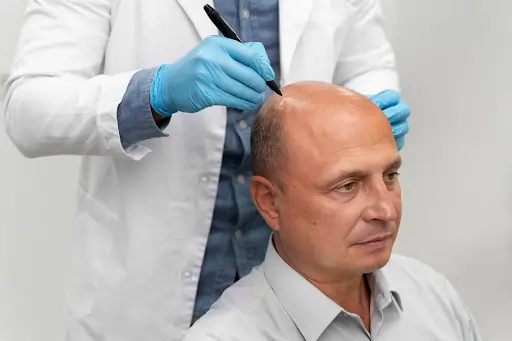Source: Freepik
Androgenetic alopecia is a common form of hair loss in both men and women. With age, the hairline recedes to form a characteristic “M,” which often progresses to partial or complete baldness. According to research, more than 50% of men have noticeable hair loss by the age of 50. In comparison, nearly 40% of women experience hair loss by age 50 or after menopause.
Here’s the good news: Baldness is no longer something you have to endure. A hair transplant can help you get fuller, healthier, and natural-looking hair. But before you book your treatment, here are five things you should know:
The Donor Hair is Limited
In a hair transplant, your surgeon will remove hair from the areas of the scalp with abundant hair, also known as the donor area. Next, they will determine the number of grafts needed and the area to be transplanted, known as the recipient area.
Keep in mind that you have finite donor hair. The harvested area can’t regrow hair later on, which is why your surgeon will decide which scalp areas to focus on to ensure maximum cosmetic improvement. Some surgeons also recommend multiple transplant procedures for better results.
The Transplanted Hair is Permanent
The hormone DHT (dihydrotestosterone) is a major cause of pattern baldness in men. Luckily, the transplanted hair follicles are resistant to DHT. Whether you undergo FUE (Follicular Unit Extraction) or FUT (Follicular Unit Transplantation), the transplanted hair follicles maintain their ability to grow hair.
However, there’s always a small possibility that grafts may not survive or fall out. Your surgeon might use special techniques to prevent such situations, giving you peace of mind.
A Reputable Hair Transplant Clinic Can Make a Difference
A reputable hair transplant clinic ensures a safe and effective procedure. A surgeon with years of experience is more likely to understand the underlying causes of hair loss and develop a treatment plan accordingly.
If you’re living in Melbourne, look for a reputable hair transplant clinic Melbourne that has state-of-the-art equipment and utilises advanced techniques to ensure natural-looking hair growth.
Following the Aftercare Instructions is Necessary
Knowing how to take care of your scalp after the procedure can minimise scarring and prevent side effects. Here are some things you should do to ensure fast healing:
- Keep your scalp clean and moisturised
- Protect your scalp from the sun and apply sunscreen
- Eat a balanced diet
- Don’t use hair care products that have harsh chemicals
- Avoid swimming and strenuous activities for at least 2 weeks after the procedure
- Don’t scratch or pick at your scalp, as it can irritate the wound sites
- Don’t wear tight headbands or hair ties to avoid applying pressure to your scalp
Results Take Time
The transplanted hair usually takes around 9-12 months to fully grow. Initially, the transplanted hair will shed after 2-3 months, after which new hair will begin to grow. Stay patient and keep following the aftercare instructions to aid the healing process.
Read more: Desk shelf mini – simple elevation, thoughtful structure


